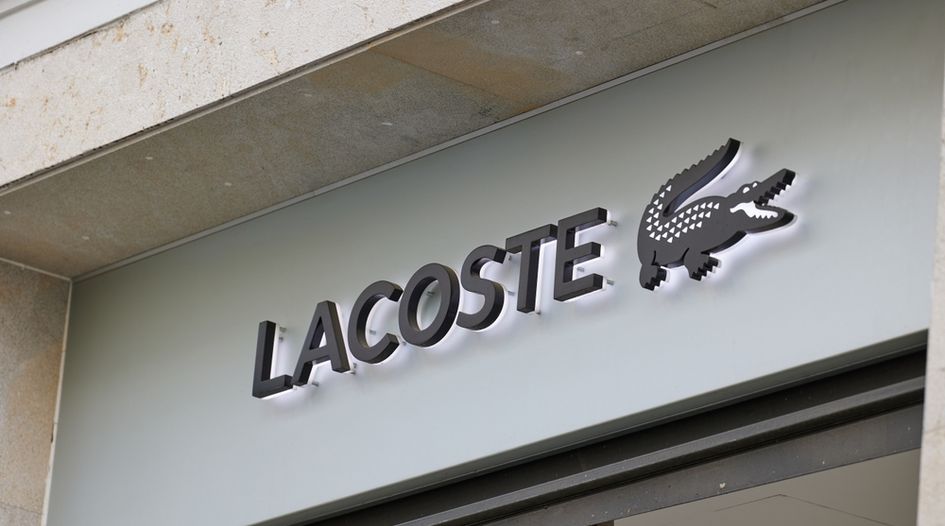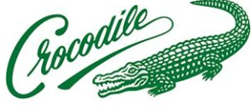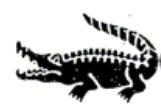Lacoste wins long-standing trademark infringement battle at the Delhi High Court

Ending a 23-year-long battle between Lacoste and Crocodile International, the Delhi High Court has permanently restrained Crocodile International from manufacturing, selling, offering for sale, advertising or using the disputed trademark in any manner that constitutes infringement of Lacoste's trademark rights (Lacoste & Anr v Crocodile International Pte Ltd & Anr, CS COMM 1550/2016, 14 August 2024).
Contextual background
The focus on fashion at the 2024 Olympics has highlighted the amalgamation of sports and style – but merchandising has long been popular among athletes. In 1931 renowned tennis player René Lacoste, who earned the moniker ‘The Crocodile’, partnered with Louis Emile André Gillier to manufacture knitted shirts tailored for tennis and other sports, produced under the name René Lacoste & André Gillier – also known as Chemise Lacoste. The shirts featured an embroidered crocodile symbol designed by Robert George, which was first introduced in France in 1927. Thus came the French fashion giant Lacoste with its popular logo.

As well as several international registrations, Lacoste obtained registration in India for the crocodile image and LACOSTE trademark together, as well as the crocodile alone in 1983 in Class 25, which it began using in October 1993.
However, an image of a reptile is not exclusive to Lacoste. Singapore-based fashion brand Crocodile International has also used a crocodile logo for clothing and sports equipment since 1947. The company’s founder, Dato Dr Tan Hian Tsin, applied to register the trademark in India in 1952 under Class 25 for shirts and singlets, and it was subsequently assigned to Crocodile International in 1983.

Deceptive similarity
Given the similarity between the logos, there is a long history of legal disputes between the two brands across various jurisdictions, including Singapore in 1980 and Japan in 1971. However, both parties signed a mutual coexistence agreement in 1983, aiming to foster an amicable resolution for future filings and use.
However, another legal battle commenced in 2001. Lacoste filed a suit in India seeking to restrain Crocodile International from using the crocodile image on products without the brand name ‘Crocodile’ accompanying it, as shown below.

Lacoste alleged that Crocodile International’s mark was deceptively similar to its own registered trademark and thus constituted infringement. Lacoste also argued that concurrent use, as stipulated in the coexistence agreement, did not extend to India and that the agreement did not authorise Crocodile International to use its logo without its brand name.
Crocodile International relied on its 1952 registration (154397 in Class 25 for shirts and singlets) in India, claiming honest and concurrent use of its composite mark – the crocodile device accompanied with the word element ‘Crocodile’ – from 1997. It also argued that under the 1983 coexistence agreement, both parties had agreed to concurrent use of certain trademarks – including the disputed mark – in several territories. Further, the agreement’s jurisdiction had been expanded to include Bangladesh, India, Korea and Pakistan through a letter dated 22 August 1985.
Court decision and reasoning
Ending a 23-year-long battle, in August 2024 the Delhi High Court reasoned that while Crocodile International was a prior registrant and user of the composite reptile image, this did not automatically grant it rights on all variations. On the other hand, Lacoste had registered its crocodile image in 1983 and had been using it prior to Crocodile International using its mark in India. Therefore, Lacoste had prior rights to the crococile mark on a standalone basis.
In the court’s opinion, Crocodile International’s mark met the criteria for being deceptively similar to Lacoste’s given the overlap in shape, silhouette and other key design elements – especially since the logos were being used on identical products. The only noticeable difference was in orientation, with Lacoste’s crocodile facing right and Crocodile International’s facing left, but this was deemed unlikely to be perceived as significant by the average consumer. Therefore, Lacoste had made a compelling case for trademark infringement. However, no relief was granted on the claim of passing off, due to a lack of convincing evidence that Lacoste had acquired a substantial reputation in India at the time when Crocodile International began using a similar mark.
Further, invoking the concept of territoriality of trademark protection, the court ruled that provisions of the 1983 coexistence agreement could not be applied in India since there was no mention of the country in it. Crocodile International had also relied on a letter from 1985 in this regard, and again the court held that for an agreement to be enforceable, it must be clear, specific and mutually acknowledged. This letter did not constitute legal evidence of an enforceable coexistence agreement, and was thus held as insufficient to establish a binding agreement in new jurisdictions, including India.
Lacoste also raised copyright violation concerns and asserted that it had created the artwork below.

The court held that the basic concept underscoring the conflicting works was an identical graphical representation of a ferocious crocodile in an aggressive stance. However, since the similarities between the two designs arose from the same idea, and therefore had limited ways to be visually realised, the defendant applied the doctrine of merger defeated Lacoste’s copyright claim.
Key takeaways
Lacoste carved a strong case for trademark infringement, despite being unable to make a case for passing off or copyright infringement. The decision underscores the importance of well-formulated agreements, especially when it comes to international coexistence of trademarks.
WTR recommends
Lacoste v Cartelo: a landmark case clarifying the rules on confusion and co-existence
India: High court jurisdiction questions set to reshape IP litigation
Blow for Vans Inc as Delhi High Court holds that prior use trumps well-known marks
This is an Insight article, written by a selected partner as part of WTR's co-published content. Read more on Insight
Copyright © Law Business ResearchCompany Number: 03281866 VAT: GB 160 7529 10